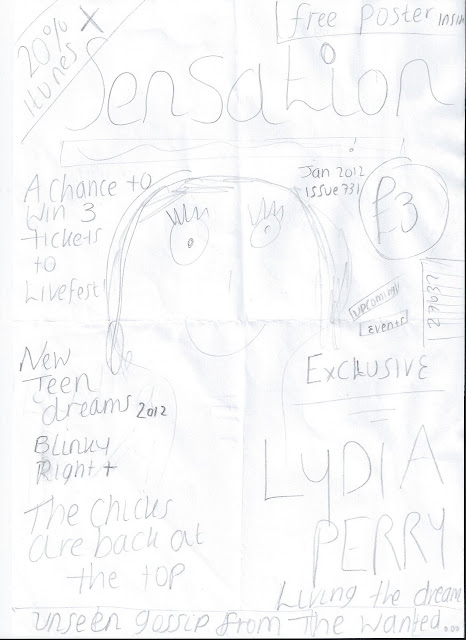ANALYSIS
The final section I will need to create for my magazine is the double spread article. As part of my research I have looked at various articles from different magazine genres.
I have decided for my article I am going to use a question and answer style. This is because I feel it is better suited to my target audience. Teenagers would loose interest in a long winded article therefore by quickly introducing new topics via continuous questions I feel I could maintain the audience's interest and write in an appropriate tone. The articles I looked at all use images to break up large chunks of text. This is a feature I am planning to imitate in my own magazine. By using large images you can create further understanding with the reader and give a brief indication about the article and its content.
I mainly looked at the layout, tone and sentence structure of the articles. Using humour is a good way to interest the audience. 'WE GRILL SAM GRILL' uses this feature as well as emphasising points through exaggeration.
The layout plays a largely important role of the article. Large chunks of text are unattractive therefore by breaking the questions down into topics the audience can not only skip to the section they are most interested in but also pin point information about the article.
By looking at the featured articles, the use of complex sentences are more often used in articles aimed at an older audience. This is because an older age range would have advanced literate knowledge and understanding. This sentence structure would not be appropriate for my magazine article as my target audience are young teenagers. Therefore by using declarative and simple sentences I will attract the right target audience.
I have decided for my article I am going to use a question and answer style. This is because I feel it is better suited to my target audience. Teenagers would loose interest in a long winded article therefore by quickly introducing new topics via continuous questions I feel I could maintain the audience's interest and write in an appropriate tone. The articles I looked at all use images to break up large chunks of text. This is a feature I am planning to imitate in my own magazine. By using large images you can create further understanding with the reader and give a brief indication about the article and its content.
I mainly looked at the layout, tone and sentence structure of the articles. Using humour is a good way to interest the audience. 'WE GRILL SAM GRILL' uses this feature as well as emphasising points through exaggeration.
The layout plays a largely important role of the article. Large chunks of text are unattractive therefore by breaking the questions down into topics the audience can not only skip to the section they are most interested in but also pin point information about the article.
By looking at the featured articles, the use of complex sentences are more often used in articles aimed at an older audience. This is because an older age range would have advanced literate knowledge and understanding. This sentence structure would not be appropriate for my magazine article as my target audience are young teenagers. Therefore by using declarative and simple sentences I will attract the right target audience.










